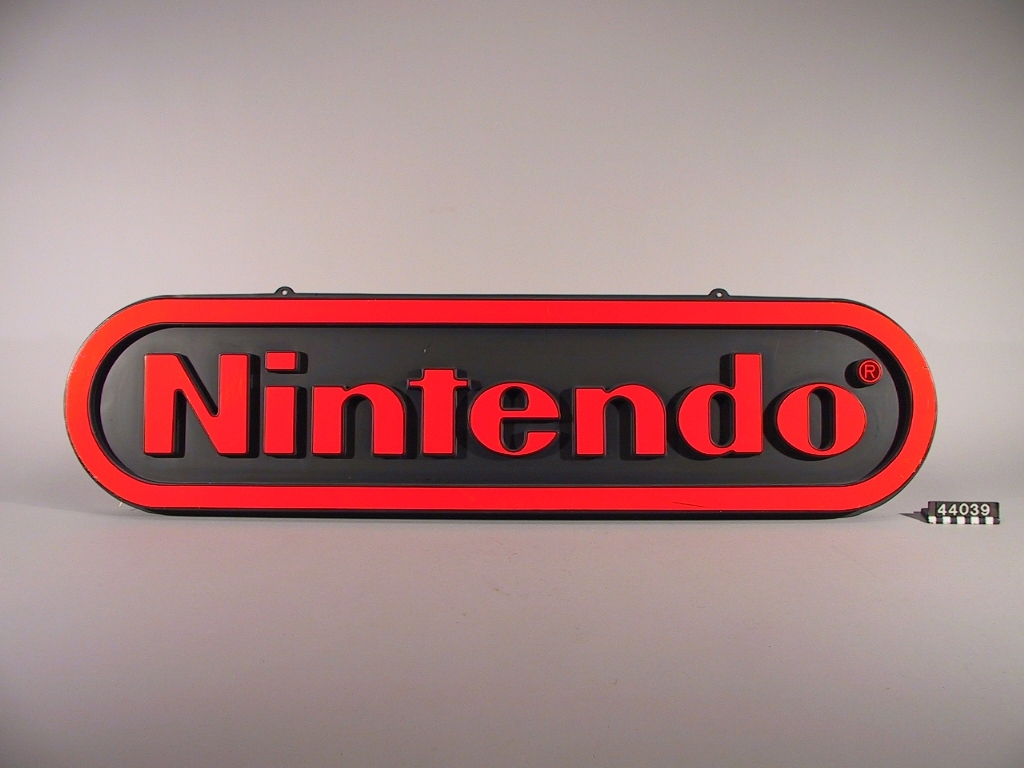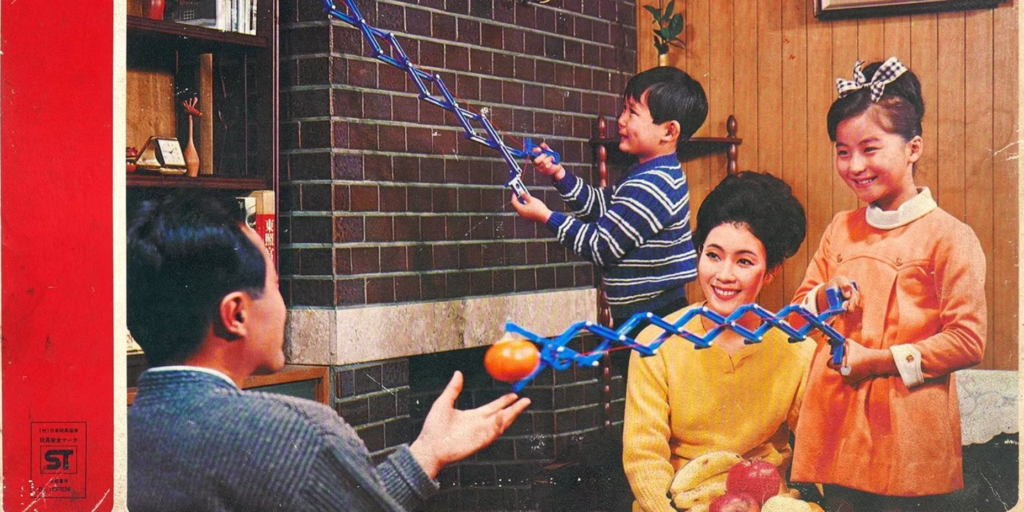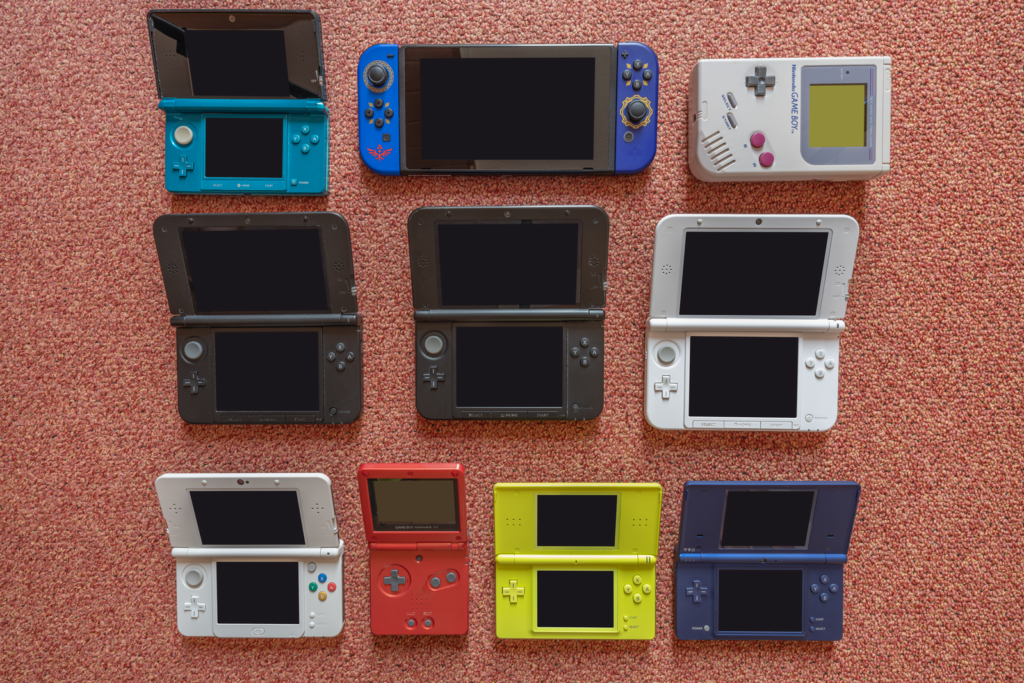Video games come from humble beginnings. Something unique about the industry is that many of the names that were big on the early scene still remain some of the most successful today.
One such name that has constantly been part of the video game scene is Nintendo. Just the name evokes images of colorful plumbers, sword-wielding warriors dressed in green, and squishy pink balls that inhale everything around them.
Nintendo and their characters are one of a kind–unique and innovative in ways that other big-name companies aren’t. Nintendo hasn’t always been such a powerhouse, though.
Just like the world of video games, Nintendo’s origins were also humble. Not all of their projects were winners. There were times when it seemed like other companies may eclipse the bright star of Nintendo.
But despite all of these challenges, Nintendo has prevailed and still reigns supreme as one of the world’s three biggest video game companies. To understand how impressive this is, we need to go back in time and look at the nuanced, sometimes complicated, but always joyful history of Nintendo.

The Birth of Nintendo: Playing Cards and Early Ventures (1889-1965)
Hanafuda Cards
What would you guess if someone asked you to guess the year that Nintendo was founded? For most people, the obvious answer would be in the late seventies or sometime during the eighties when video games really started to become a phenomenon.
What’s surprising is that Nintendo was actually founded in 1889 in Kyoto, Japan. It was created by Fusajiro Yamauchi to produce traditional Hanafuda playing cards.
Hanafuda playing cards are stunningly decorated with different types of foliage like cherry blossoms, plum blossoms, maple trees, and many more. They depict the changes in the seasons.
They can be used to play a number of card games, similar to Western playing card decks. The opposite side of the card is blank.
Yamauchi’s playing cards were handmade. They quickly became popular enough for him to hire assistants. Over time, Nintendo would branch out into other kinds of playing cards, continuing to be successful.
The company stayed in the family, but at the time, companies were typically passed down from fathers to sons. A problem arose when Yamauchi had only daughters.
He came up with a creative solution. He adopted his son-in-law, who took the Yamauchi family name. Amazingly, the same situation played out with the next generation as well.
Expansion and New Business Ventures
With Nintendo in the hands of the third Yamauchi, Hiroshi Yamauchi, the company continued to grow. Nintendo reached out to American card companies, specifically the United States Playing Card Company, to bring their cards to the United States.
Hiroshi was unimpressed with the small American card company, but the next American company he would speak to would be a great success. It was none other than Disney.
In 1958, Disney and Nintendo brokered a deal. This let Nintendo feature Disney’s characters on their cards. This partnership was such a smashing success that Nintendo had extra capital to try their hand at producing different products.
They gave all kinds of things a shot–instant rice and vacuum cleaners among others. But the only thing that really panned out for the card company was producing children’s toys.
The last big thing to happen for the company in this period was the hiring of mechanical engineer Gunpei Yokoi. He would end up inventing many of the toys that would make Nintendo successful in the coming years.
Nintendo Toys (1966-1972)
The Rise of Gunpei Yokoi
Most Japanese households were declining to buy more trading cards. Therefore, Nintendo turned their focus to their second most successful area of sales–toys.
Compared to other companies, Nintendo was still small. Toys weren’t an easy market to break into. Most of the big names of the time, such as Bandai, had been around for a long time. This made it difficult for little Nintendo to carve out a niche.
If they were going to be successful, they needed something different from anything else on the market. Enter their conveyor belt repairman–Gunpei Yokoi.
Hiroshi Yamauchi was visiting one of the Hanafuda card factories when he spied something odd–an extending-arm toy. Nintendo was producing a few toys at the time, but nothing like this. Yamauchi discovered it was built by none other than one of their maintenance men, Gunpei Yokoi.
Charmed by the enchanting toy, Yamauchi hired Yokoi to create his extended arm toy as a real product for Nintendo. This toy would end up being released as the Ultra Hand.

It was a runaway success for the struggling card company. Yokoi was officially moved from maintenance to toy development.
Gunpei’s background education was in electrical engineering. The toys he produced all had an electronic element to them.
This made them stand apart from the crowd since electronic toys weren’t the norm quite yet. Some of his other hits were the Ultra Machine, the Love Tester, and a programmable drum machine called the Ele-Conga.
By 1972, Nintendo and Gunpei knew that they could push the limit further. Video games were on the horizon, and Nintendo was going to be right there to meet the new wave of future toys.
Electronic Gaming
When Nintendo first dipped its toes into the video game world, it wasn’t with a console or even a game of their own. Instead, they made an accessory for the Magnavox to go along with their brand-new video game console, the Magnavox Odyssey.
This accessory was the light gun for the Shooting Gallery game on the Odyssey. This would be the precursor to the light gun that would be used with Nintendo’s own consoles in the future.
But before Nintendo’s famous home consoles could be created, they began to produce arcade game cabinets. It would be in these arcade games that some of the most famous Nintendo characters would make their first appearance.
Arcade Gaming and the Nintendo Entertainment System (1972-1992)
Early Arcades and Consoles
Nintendo’s first independent arcade game once again featured their light gun once again. This proto-arcade game was called the Laser Clay Shooting System. It featured figures moving behind a screen that the player could use the light gun to shoot at.
The company also got the rights to distribute the Magnavox Odyssey in Japan. At the same time, the company produced the first original Nintendo arcade video game, EVR Race.
Their next venture would be the biggest yet. Nintendo was ready to create their very own console. They called it the Color TV-Game 6.
It was a bright orange console that featured very simple games like Pong, but it was considered a success for Nintendo. Without the Color TV-Game 6, there would be no NES.
Shigeru Miyamoto and Game in Watch
Yokoi, now head of the video game division of Nintendo, still had his hand firmly on the creation of Nintendo’s new electronic toys. His next huge success was a series of arcade games that were the first time famous characters such as Donkey Kong and Mario would appear.
But the success of these games wouldn’t have been possible without legendary video game designer Shigeru Miyamoto. Miyamoto was the creative mind behind Donkey Kong and Mario. These colorful arcade characters and their games were soon ported to home systems.
Next was the first foray into handheld gaming systems with the Game & Watch. The Game & Watch games were very simple. As their name suggests, they featured a clock as well as the game.
Despite being small and uncomplicated, Game & Watch was an unmitigated success, selling 43.4 million units worldwide and setting the stage for future handheld Nintendo systems.
The NES Era: Nintendo Entertainment System and Game Boy (1982-1995)
Nintendo Entertainment Center or NES
One of the most famous consoles ever released was the Family Computer, shortened to Famicom, in Japan. It was wildly popular. Nintendo jumped on this popularity, redesigning the Famicom for a release in the United States.
In the US, the Famicom was branded as the Nintendo Entertainment System for a release in 1985. Just like it was in Japan, the NES sold unbelievably well. It outsold all other consoles on the market.
By the time Super Mario Bros was released later that year, there was no stopping Nintendo. They were on a roll, and Mario was swiftly followed by Metroid and The Legend of Zelda.
This success was a surprise to everyone at the time, since the popularity of video games as a whole had been on a downward trend. Nintendo was just different from its competitors. It offered something that Atari, Magnavox, and other smaller companies just couldn’t provide–novelty.
Nintendo and the NES were credited for the revival of the video game market as a whole. It’s possible that without the NES, video games would have never reached the ubiquitous popularity they have today.

Game Boy and Super Famicom/Super Nintendo Entertainment System
Following the success of Game & Watch, Nintendo knew that they had struck gold with portable games. In 1989 Nintendo followed up Game & Watch with the Game Boy.
Unlike competing handheld systems, the Game Boy was durable, affordable, and most importantly, came with Super Mario Land. The Nintendo success train kept on moving, and the Game Boy sold 118 million units.
On the heels of the Famicom, or the Nintendo Entertainment System as it was known in the United States, came its successor–the Super Famicom/Super Nintendo Entertainment System. These were released in 1990 and 1991 respectively.
Despite also being a commercial success, the SNES faced one of Nintendo’s first real competitors, SEGA and its Sega Genesis. And just like that, the first console war was on.
Flummoxed by the Genesis, Nintendo overreached with their next product, the Virtual Boy. Meant to catapult video gaming into the future, the Virtual Boy was marketed as a 3D console.
Unlike its predecessors, the Virtual Boy did not sell well. But there was more success for the company from Kyoto coming up.
The Nintendo 64, Game Boy Color, Game Boy Advance, and GameCube (1996-2003)
From that point on, Nintendo’s consoles and handheld console releases came quicker than before. After the less-than-successful Virtual Boy, Nintendo was back on the top of their game.
The next generation of consoles were:
- Nintendo 64 (1996): Where the Sega Genesis had been Nintendo’s main competition in the previous generation, it was the Sony Playstation that threatened the Nintendo 64. Nintendo stuck with the cartridge format, whereas Sony’s Playstation ran CD games.
Despite CDs being the more popular format, the Nintendo 64 was still a win for Nintendo.
- Game Boy Color (1998): After Pokémon became a huge hit for the Game Boy and Nintendo, the Game Boy Color was released in 1998. With the new handheld system and Pokémon, Nintendo was at the top of the video game market once more.
- Game Boy Advance (2001): Nintendo’s first full-color handheld console was the Game Boy Advance. It was significantly more powerful than its predecessors.
- Gamecube (2001): In the same year as the Game Boy Advance was released, Nintendo released its next home console, the GameCube. Following up the Nintendo 64, the GameCube was the sixth generation home console for Nintendo, going up against the PlayStation 2 and the new system on the block, the Microsoft Xbox. The GameCube was the first Nintendo system to use discs, but instead of CDs, it used small optical discs.
The Nintendo Wii, Nintendo DS, Nintendo 3DS and Wii U
After the GameCube and the Game Boy Advance, which were relatively safe systems that resembled their competition, Nintendo decided to switch things up for the next generation of systems.
Experimenting with dual screens, 3D, and motion tracking, Nintendo’s next consoles would change the field of video game consoles forever.
- Nintendo DS (2004): The Nintendo Dual Screen, shortened Nintendo DS, was different from any other handheld console ever released. It featured dual screens, one of which was also a touch screen. The Nintendo DS could also produce basic 3D graphics.
- Wii (2006): Nintendo’s next big swing was the Wii, and it was a home run. The public loved the motion tracking controllers’ library of fun titles meant for family and group play. Xbox and Playstation were targeting more serious, adult audiences, and the market was prime for a console like the Wii to be a smash hit.
- Nintendo 3DS (2011): The follow-up to the DS was the Nintendo 3DS, which had improved 3D graphics. The 3DS would be Nintendo’s flagship handheld console for over a decade.
- Wii U (2012): On the other end of the spectrum was the Wii U, the successor to the Wii and Nintendo’s worst-selling home console of all time. It featured a gamepad with a screen that worked as an advanced controller. Sales of the 3DS were steady but not impressive. The Wii U turned out to be a commercial failure and Nintendo was struggling for the first time in decades.
Return to Power: The Nintendo Switch
Nintendo knew it was time to take another risk. This risk could make or break the company. They knew that somewhere between the popular Wii and the failing Wii U, there was a sweet spot of what gamers really wanted from Nintendo.
Despite the odds, they managed to pinpoint this spot. In 2017, Nintendo released the Nintendo Switch. The hybrid console could switch effortlessly between television play and handheld play, and features removable “joy-con” controllers.
Amazingly, the Switch was more than a rebound for Nintendo–it was a rebirth. The Nintendo Switch is the company’s current system, as well as holding the title of Nintendo’s best-selling console of all time.
References
“The Traditional Beauty Of Nintendo’s Playing Cards”
https://kotaku.com/nintendo-japan-hanafuda-cards-beauty-gambling-tradition-1848724872
“Nintendo: 8 Weird Products They Made Before Video Games”
https://gamerant.com/nintendo-8-weird-products-they-made-before-video-games/
“All About/Nintendo;As the Craze Cools, A Youth-Based Industry Matures”

